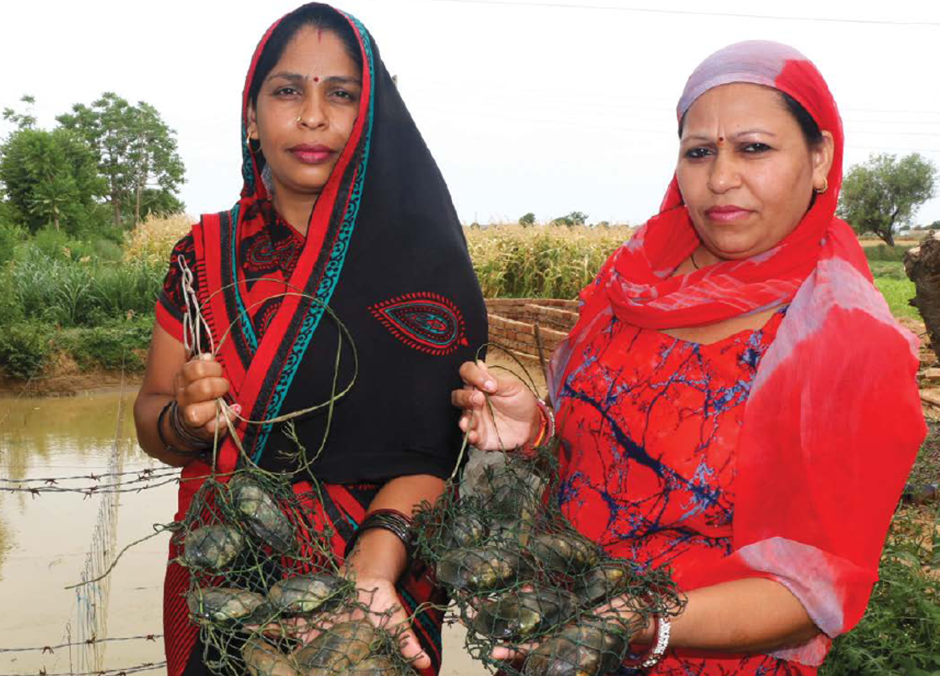Pearls of Pataudi
Pearls of Pataudi
How women in rural Haryana are cultivating oysters, growing pearls – and becoming entrepreneurs

Photo: UNDP India
Maya Devi’s farm in Bhora Kalan village in tehsil Pataudi in Haryana has no direct road access. To reach the farm, one must walk through the local primary healthcare centre’s compound, jump across its shoulder-high walls, and then navigate another few hundred yards to get there.
When a relative first suggested the idea of pearl farming, Maya Devi was sceptical. The concept was practically unheard of in the landlocked northern Indian state. It was around this time that staff from the Disha project, accompanied by implementing partners Humana People to People India (HPPI), visited Bhora Kalan and invited residents to an information and three-day start-up training session on setting up and running enterprises successfully.
“The start-up training boosted our confidence. The thorough information provided by trainers about starting businesses and running them successfully motivated me to give pearl farming a serious thought,” recalls Maya Devi. Following the training session, she shared the idea with her trainers, who supported her to prepare a budget plan and helped her identify schemes she could apply to for loans.
On their farm, Maya Devi and her sister-in-law have now constructed a freshwater pond to harvest pearls. The new enterprise has generated a lot of curiosity within the community. “Traditional farming methods are at the mercy of weather. We always wanted to try something to ensure financial security even in the event of crop failure,” says Maya Devi.
Soon, Maya Devi’s husband and sister-in-law decided to join and support the initiatve. The family invested money from its savings for the construction of the freshwater tank, the procurement of oysters and the tools needed to introduce irritants into them.
“We received help from my nephew, who has a lot of knowledge about pearl harvesting and conducts regular trainings in the field for interested individuals,” says Maya Devi.
It has been five months since the irritant was surgically put inside the oysters and they were dropped into the water reservoir. It will take another six to eight months for the pearls to be formed, and like any entrepreneur awaiting the results of hard work, Maya Devi is anxious to see the outcome.
“The best part of the Disha project is that trainers maintain contact even after the training is over and provide much-needed support, not only in the initial phase of setting up the enterprise, but as regular follow-up visits when the business is up and running,” says Maya Devi.
“We do our hard work and the oysters do theirs. I just can’t wait to share the results of this effort with our Disha trainers,” she says with a smile.

 Locations
Locations